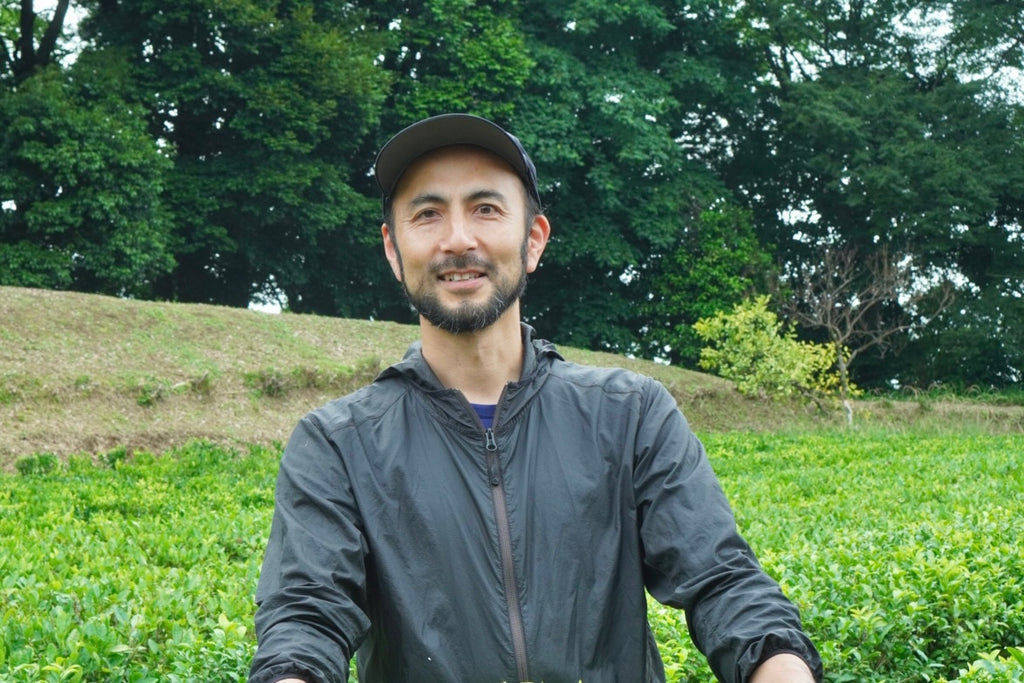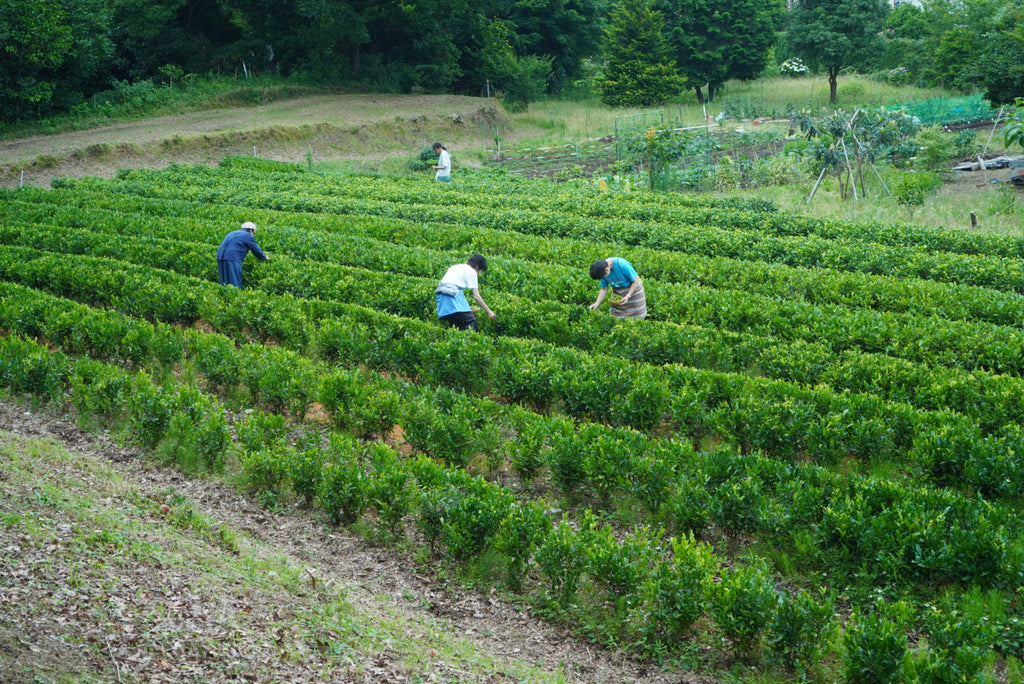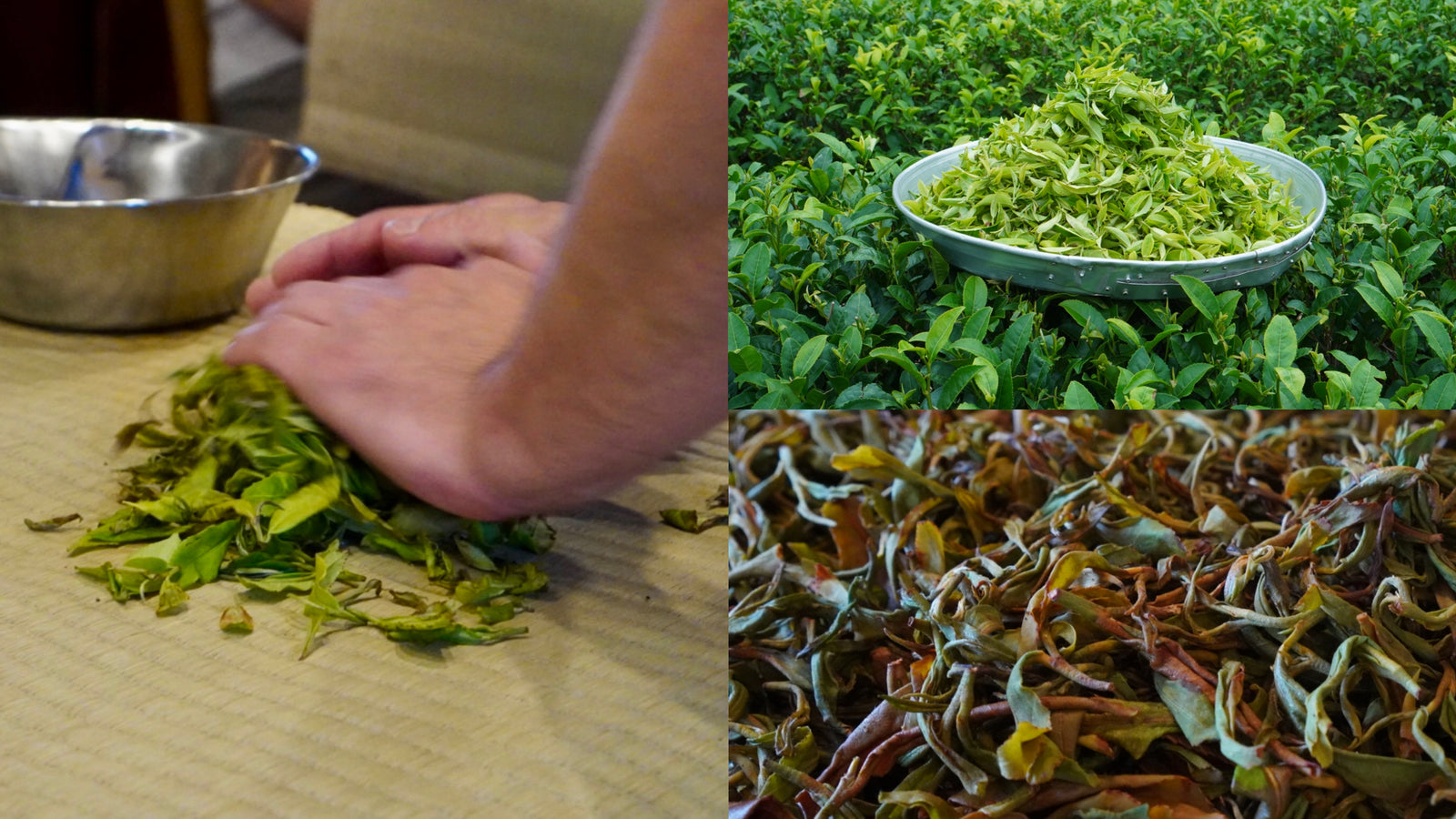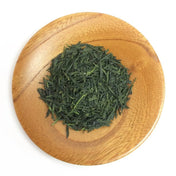Do you know there is black tea made from tea leaves eaten by insects?
It is called Mikko-kocha (蜜香紅茶), literally means honey fragrance black tea. This special fragrance is created by tea leaves which have been chewed by an insect called unka (ウンカ) Jacobiasca formosana, a type of a leafhopper.

unka on the stem of the tea plant
When the leaves get eaten by leafhoppers, tea plants produce the compound called phytoalexin to protect themselves. The compound turns into a special honey-like-flavor when tea is processed.Taiwanese oolong tea called "oriental beauty" is famous for using these tea leaves.
2-Day Workshop for Honey Fragrance Black Tea
This June, I participated in a 2 day workshop planned by Ogura Tea Garden,(TEA FACTROY joshun-en ) where we would make honey fragrance black tea from the harvest.
 Mr. Ogura from Ogura tea garden
Mr. Ogura from Ogura tea garden
The participants came together on the top of the hill in Odawara, Kanagawa, where their tea farm is located.

Ogura-san told us that the leafhoppers fly to the tea farm in June, and eat buds and young leaves of the tea plants just after the first flush tea leaves have been picking. It causes a lot of damage to the tea leaves and they can't grow anymore.They can't treat the insects as they grow their tea without pesticide.
 Buds become yellow-green, curl and tough after being eaten
Buds become yellow-green, curl and tough after being eaten
They had to give up making a second flush tea. Instead of this, they thought, they wanted to share some interesting experiences with people who love tea, so they decided to run tea making workshops.
Picking
We started to pick the leaves, one by one, by hand.

We sometimes chatted, but mostly we concentrated on picking, while seeing leafhoppers and other insects flying around the tea plants, and the 1.5 hours passed very quickly. 13 people of us picked the leaves, however we could only collect about 1.2kg. It's a hard work to pick leaves by hand, when you need to select the right leaves.
 The leaves we picked
The leaves we picked
The leaves were transferred to their factory.
Withering
The tea leaves were spread out on the a mesh metal plate in the place for withering(drying), and fans were used to pull and push air across the leaves. The tea was left to wither over night , which is expected to reduce moisture content by 40%.

[ The tea leaves before withering ]

[ The tea leaves after 15 hours withering ]

Rolling
Rolling is the next process. The cell walls of the tea leaves need to be broken open to promote the oxidation process.By rolling tea leaves, their enzymes and essential oils are exposed to the air, and then the oxidation proceeds. The rolling is usually undertaken by machine, but we rolled it by hand. Holding tea between hands, moved the tea gently in a circular motion on tatami mat.

Everyone was earnest about rolling, which was done for 30 minutes.

One of interesting things we found out that each person's rolled leaves had a different aroma, such as fresh, mature and gentle aroma, etc. It is no wonder as each person rolls with a different pressure and a different hand temperature.
[ The tea leaves after 30-minute rolling ]

Oxidization/Fermentation
The leaves were left at room temperature for 1-2 hours to promote the oxidization.
[ The tea leaves after leaving for 1 hour ]

You can see the color of the tea leaves changes to a reddish green.The leaves emit a sweet and mellow fragrance.
Drying
The tea leaves were placed in a dryer for finishing. The heat prevents further oxidation.

It's done!

1.2kg of picked tea leaves finally became 300g of honey fragrance black tea.

How beautiful it is! It has sweet and elegant aroma.
Ogura-san told us that the taste was still "sharp" as it's just after making, and will be milder in a month's time. I will wait before enjoying a cup of this tea.
It was a fun experience that people get together and make a special black tea.I'd never thought of making black tea myself, but I knew that I could make it ! It was one of my dream to make homemade black tea.
I hope you can have such a special tea experience when you visit Japan!
Information
Ogura family's factory and cafe

They look after their tea plants without pesticide and chemicals, respecting the natural flavor of the plants, and make their tea from what they harvest, which they process themselves in their own small factory.
You can buy their black tea from us.
Ogura Tea Garden KN003: Yabukita Wakocha First Flush Black Tea from Ashigara, Kanagawa 足柄産のやぶきた紅茶
Made from Yabukita cultivar tea plants, and is grown without the use of pesticides. From the first flush in late spring, farmer Yuki Ogura produces this black tea in the style of first flush Darjeeling tea, withered, rolled, then lightly oxidized.
The black tea (above) was finally roasted. It tastes milder, and roast flavor is added, it's a "relaxing" taste. Popular for children and woman who are not good at caffeine.


